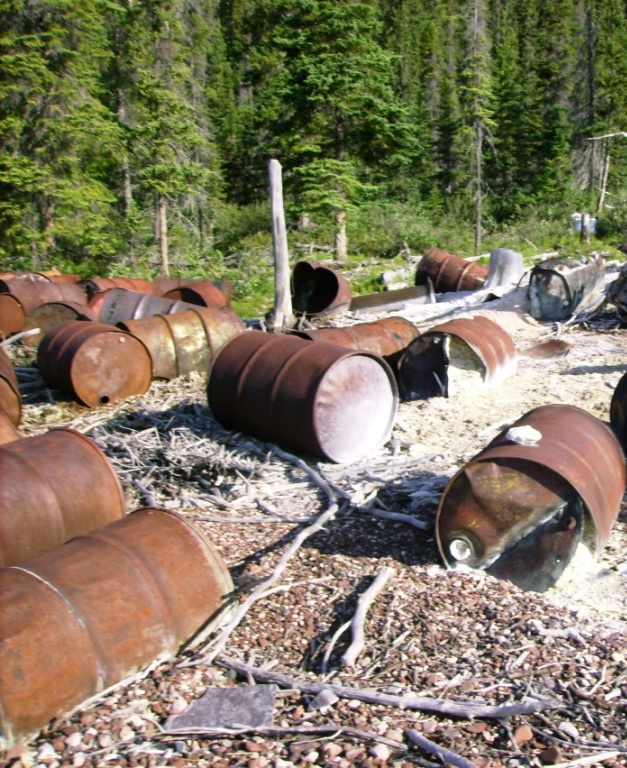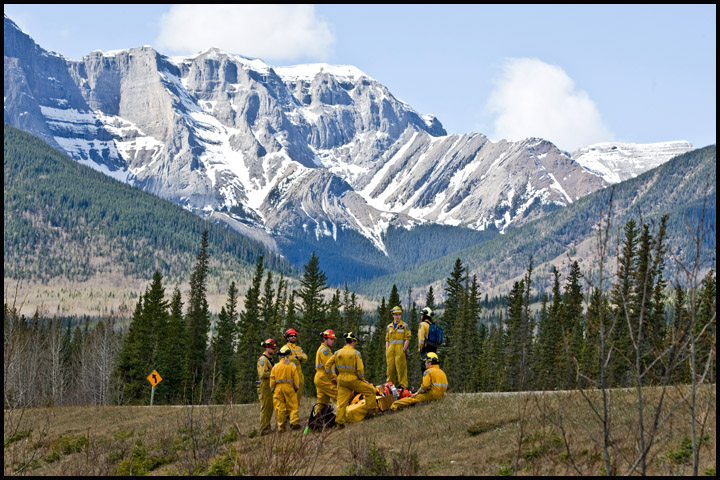Sunday, October 5, 2025
It’s a challenging time in Canada and North America with the ongoing trade war and fallout from changing environmental regulation and policies. Bringing stakeholders and the public together at collaborative events has never been more important.
The 32nd Annual Council Session of the Commission for Environmental Cooperation (CEC) and its Joint Public Advisory Committee (JPAC) Public Forum convened top government officials, Indigenous leaders, environmental experts, and community advocates from Canada, Mexico, and the United States in Mexico City on July 24–25, 2025. The event marked a pivotal moment for advancing circular economy practices and nature-based solutions across North America.
Held in a hybrid format, #CEC32 explored the theme: “The Nexus Between Circular Economy and Nature-based Solutions in North America.” It held discussions on how integrating these approaches could support long-term sustainability by balancing economic growth with ecosystem restoration and protection.
The council session was attended by Secretary Alicia Bárcena of Mexico’s Secretariat of Environment and Natural Resources (SEMARNAT), Michael Bonser, Associate Assistant Deputy Minister of Environment and Climate Change Canada, and Lee Zeldin, Administrator of the United States Environmental Protection Agency.
For over three decades, the CEC has fostered trilateral environmental cooperation, aligning the three nations on shared goals around conservation, environmental law enforcement, and the prevention of trade-related environmental conflicts, all within the context of growing economic integration across the continent.
Setting the Stage: Why #CEC32 matters
Climate change has ignited concerns that transcend borders, as wildfires, floods, droughts, and extreme weather events intensify across North America, impacting millions. In response, Canada, the U.S., and Mexico have strengthened their collaboration to face these urgent, interconnected environmental challenges together.
CEC’s Annual Council Session has complemented the North American Free Trade Agreement (NAFTA) by supporting sustainable development and preventing environmental disputes. It aims to protect and enhance the North American environment by addressing potential trade and environmental conflicts and promoting the effective enforcement of environmental laws.
“The decisions and actions we take, or fail to take today, and how quickly we act to tackle pollution, biodiversity loss and changes in climate will determine the livability and sustainability of future generations,” said Jorge Daniel Taillant, CEC Executive Director. “We need all hands on-deck to tackle these three important issues and your opinion and engagement matters. Together we can help build climate resiliency, reduce pollution and better protect our biodiversity, our land, our air and our water, while ensuring the health and safety of our most vulnerable communities.”
Nature-Based Solutions: Aligning ecology and economy
The first panel at #CEC32 explored how nature-based solutions (NbS) can address climate change and biodiversity loss while driving economic and social benefits. Moderated by JPAC member Felicia Marcus, the session highlighted that NbS, when thoughtfully designed, can regenerate ecosystems, create jobs, and improve public health, challenging the notion that the economy and environment are at odds.
Speakers shared how initiatives such as restoring wetlands, managing forests, or reintroducing native species not only boost biodiversity but also mitigate climate risks and support local economies. Tools like the International Union for Conservation of Nature (IUCN) global NbS standard and environmental valuation models were cited as critical to scaling impact and measuring success.
James Rattling Leaf, Sr., Tribal Advisor for the Environmental Science Innovation and Inclusion Lab (ESIIL), underscored the importance of culture in ecological work. “The buffalo are returning as Indigenous people are, not just to the land, but to our stories, our ceremonies, and our futures,” he said. “If we are to regenerate the Earth, we must regenerate our relationships with land, with each other, with all those things like the buffalo who once sustained us and will again.”
The panel concluded that scaling NbS across North America requires inclusive governance, Indigenous leadership, private sector investment, and cross-border collaboration.
Circular Economy: Closing material cycles and creating sustainable systems
The second panel at #CEC32 examined how circular economy (CE) principles are gaining momentum in North America as a way to reduce waste, conserve resources, and strengthen economies. Moderated by JPAC member Bob Varney, speakers from policy, industry, and civil society emphasized that circularity goes beyond recycling; it’s about redesigning entire material lifecycles to cut waste, regenerate nature, and reduce reliance on raw resources.
Jennie Romer, Director of Policy at the Ellen MacArthur Foundation, discussed the importance of Extended Producer Responsibility (EPR) in shifting waste management responsibilities. EPR holds manufacturers accountable for managing their products after consumer use, reducing waste and the demand for virgin materials.
“Extended producer responsibility at its core is opposed to manufacturers who create products are also responsible for managing those products once the consumers are finished with them at the end of life. And so EPR really reduces waste and demand on virgin materials, benefits nature, and it really drives investment into new collection, sorting, processing infrastructure and creates local jobs in the process and new revenue streams for companies,” Romer explained.
Speakers also shared real-world examples of how circular economy models are being successfully implemented. Martín Rincón, Director of Corporate Operations and Sustainability at Bio Pappel, presented a video emphasizing their “urban forest” circular model that recycles paper without cutting down trees. This approach demonstrates how industries can scale circularity, avoiding tree-cutting while achieving both environmental and economic benefits.
He explained, “A company like Biopapel would need more than 22,000 trees per day as raw material to complete the production of paper, which would be equivalent to cutting down all the trees in Central Park every 24 hours.” He further added, “But the economy does not need to cut a single tree to manufacture paper. In this way, paper becomes paper again, and trees will remain trees.”
From Dialogue to Action: Next steps for environmental cooperation
Following the panel discussions, which underscored the urgency and potential of nature-based solutions and circular economy models, the Council convened on July 25 to announce concrete steps to advance environmental cooperation across North America. These initiatives build directly on the themes explored the previous day, translating ideas into trilateral commitments.
The Council announced new initiatives to strengthen trilateral environmental cooperation under the USMCA’s Environmental Cooperation Agreement. A key project unveiled was WaterWISE: Integrated Water/Wastewater Solutions for Effectiveness, focused on decentralized wastewater treatment aligned with regional standards. The Council also launched the eighth cycle of the North American Partnership for Environmental Community Action (NAPECA), centred on “Community-based Circular Economy Strategies to Improve Local Well-being and the Environment.” In addition, members initiated a five-year review of the Environmental Cooperation Agreement to boost its effectiveness and reaffirmed their commitment to an impartial Submissions on Enforcement Matters (SEM) process that promotes transparency and accountability.
Other key commitments included:
- Developing a Strategic Plan for 2026–2030 to modernize regional cooperation.
- Strengthening shared environmental monitoring and open data systems.
- Expanding engagement with Indigenous Peoples, youth, civil society, and industry.
- Promoting awareness of shared environmental challenges across North America.
- Supporting institutional and community capacity-building efforts.
Furthermore, the Council emphasized that these efforts aim to deliver measurable results for communities and foster solutions tailored to the realities of climate change on the continent.
As North America continues to navigate trade disputes along with the climate and biodiversity crises, the commitments made at #CEC32 offer a renewed path toward regional resilience. But lasting change requires more than mere policy pledges; it demands action, collaboration, innovation, and public participation. From restoring ecosystems to rethinking production systems, the time to act is now!
To view the videos available to the public, click here.

Shreejit Shelar is an editorial intern for Environment Journal. He is a writer and a student of Contemporary Journalism at Centennial College.
Featured images credits: Getty Images
Featured image, from left to right: Andria Sherstone, Director of Environment and Climate Change Canada; Camila Zepeda, Head of the International Affairs Unit of Mexico’s Secretariat of Environment and Natural Resources (Semarnat); Michael Bonser, Associate Assistant Deputy Minister of Environment and Climate Change Canada; Secretary Alicia Bárcena of Mexico’s Secretariat of Environment and Natural Resources (Semarnat); United States Environmental Protection Agency Administrator Lee Zeldin; Usha-Maria Turner, Senior Advisor to the United States Environmental Protection Agency Admistrator; Jorge Daniel Taillant, CEC Executive Director. Credit: CEC












